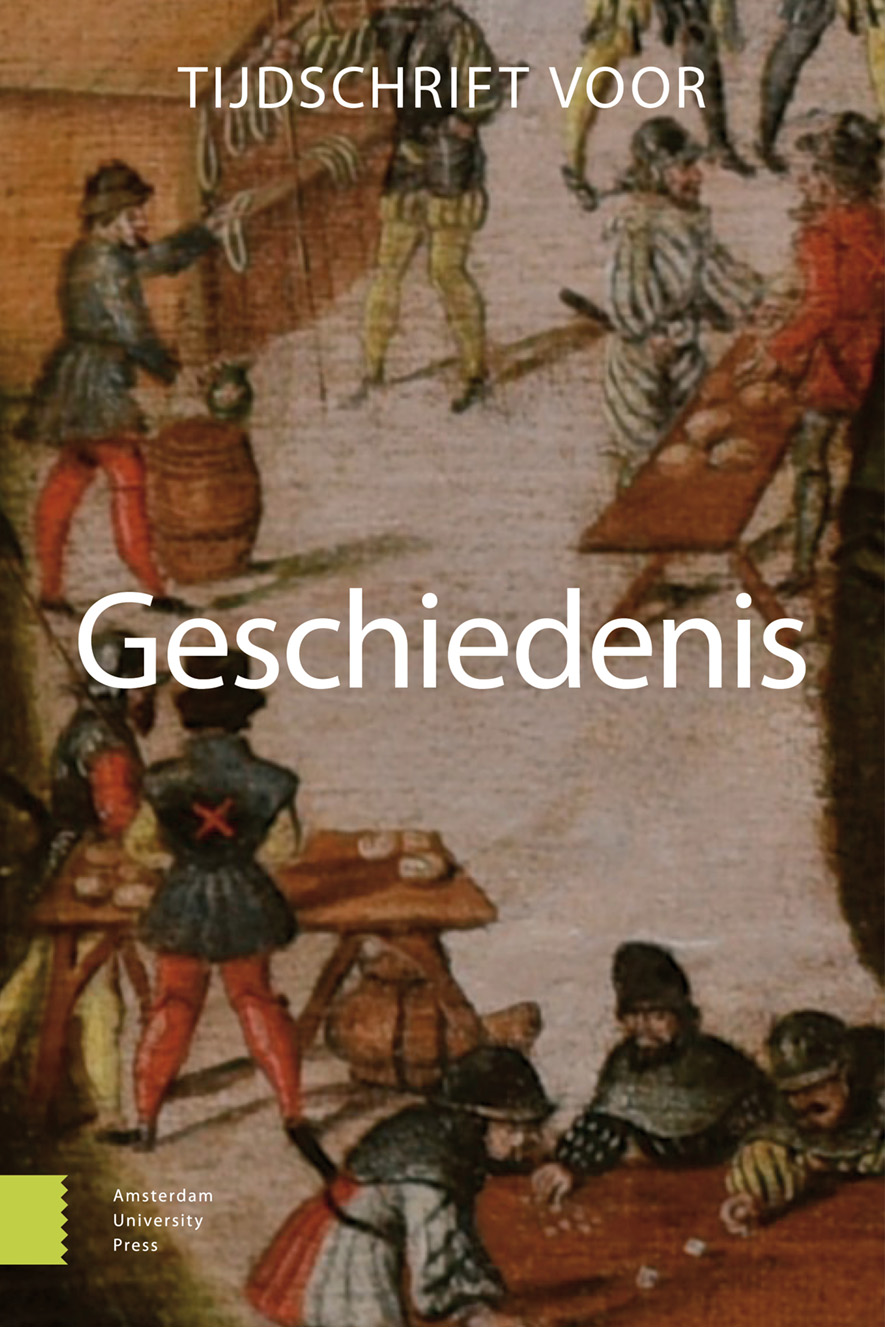- Home
- A-Z Publicaties
- Tijdschrift voor Geschiedenis
- Previous Issues
- Volume 132, Issue 2, 2019
Tijdschrift voor Geschiedenis - Volume 132, Issue 2, 2019
Volume 132, Issue 2, 2019
-
-
Tijd in de historische sociologie van Ibn Khaldûn
Meer MinderDoor Rudi KünzelAbstractTime in the historical sociology of Ibn Khaldûn
The Islamic thinker Ibn Khaldûn (1332-1406) developed a historical sociology in which change and its counterpart, habit, were essential components. There is a remarkable similarity to the ideas of later Western sociologists such as Weber and Bourdieu. The emergence of power in rural areas is followed by violent migration to urban ones, and the formation of dynastic states. Every dynasty starts out in a nomadic or agricultural society, and in its subsequent urban form passes through the stages of rise, flowering, and decline. Urban trade and industry usually develop at the same pace as those dynastic states. All this is a cyclical process. Simultaneous processes unfold in upward or downward spirals in which the various factors strengthen or weaken the impact of the others. Change is thus a central feature of this system, but it is counterbalanced by the stabilizing factor of habitus (or routine), which can assert itself at every level: social, cultural, and mental. As a result, different sectors of a society may develop at different speeds. Ibn Khaldûn brilliantly combines his cyclical model with a linear principle: that of traditional Islamic chronology. His awareness of time as a crucial variable is also apparent from his comments on how a researcher’s position on the timeline influences what he is able to observe – and from his profoundly historical view of man.
-
-
-
Perscensuur en het Hof van Holland, 1749-1800
Meer MinderDoor Ruben SchalkAbstractPress censorship and the Court of Holland, 1749-1800
The Dutch Republic is often presented as having relative freedom of press already in the seventeenth century. However, it has been argued that censorship increased during the eighteenth century because of more efficient co-ordination between authorities. This paper examines this claim by examining trials and bills in the provincial court of Holland (Hof van Holland). This court handled cases of appeal from urban courts and tried censorship cases from The Hague – the political centre of the Dutch Republic. It could also propose litigation regarding censorship. Censorship convictions in this court were nevertheless rare between 1750 and 1800. The court did go at lengths to propose novel censorship laws, only to find that enactment of those laws was not a real concern of the Provincial Estates. This suggests that the political fragmentation of the Dutch Republic continued to hinder enforcement of censorship.
-
-
-
Alle wegen leiden naar… een instelling?
Meer MinderAuteurs: Sofie De Veirman & Isabelle DevosAbstractAll roads lead to... an institution? Institutionalisation trajectories of deaf people in East Flanders, 1750-1950
Comparing the life courses of deaf people with those of their siblings, we examine in this article the institutionalisation trajectories of deaf people in eighteenth- and nineteenth-century East Flanders. Despite an increase in institutionalisation in the nineteenth century, our analysis shows that institutionalisation was not an obvious life course event. Individual characteristics such as place of residence, marital status, and the presence of close family members were important factors for one’s opportunities for institutionalisation, especially at a young age. Whereas living in the city and being unmarried favored institutionalisation, deaf people with siblings and from a middle class environment were less likely to be institutionalised. Nevertheless, poverty did not necessarily drive deaf people into an institution. Our results suggest, above all, a strong interaction between formal (institution) and informal care (family). The fact that many deaf people were urban singles, mainly because of the presence of deaf schools in the cities, probably contributed to their higher rate of institutionalisation in later life.
-
-
-
Dienaar van twee meesters
Meer MinderDoor Hanneke TakkenAbstractIn the service of two masters: military chaplains during the First World War
This article treats the work of the British Anglican, German Protestant and French Catholic military chaplains during the First World War. Based on a wide range of sources, the author aims to answer the question of whether these men experienced role tension. This is the tension between their religious and secular responsibilities; between their two masters: the church and the state. Especially British and German chaplains occasionally felt their secular ‘side jobs’ had a negative impact on their religious task. However, most had little difficulty integrating their work for God and their work for troop morale.
-
-
-
Ferm, doch onopvallend
Meer MinderAuteurs: Laurien Crump, Lenna Lammertink & Eva ZeilstraAbstractFirm, but inconspicuous. The Netherlands and the Conference on Security and Co-operation in Europe (1973-1983)
This article reconsiders the role of the Netherlands in the Conference on Security and Co-operation (CSCE) in Europe in times of both détente (1973-1979) and crisis (1980-1983). This conference was meant to channel the Cold War in a more peaceful direction, but soon turned into a clash between Western and Eastern European values. Contrary to conventional wisdom, this article argues that the Dutch were not primarily concerned with advancing human rights, but rather with maintaining Western European unity and mediating between the members of the European Community and the North Atlantic Treaty Organization. Moreover, the Dutch priority shifted from European Political Co-operation during détente to a greater emphasis on NATO and co-operation with the Americans in times of crisis. Pragmatic rather than idealistic, the Dutch contribution to peace in Cold War Europe consisted more in its willingness to compromise than in its principled defence of human rights.
-
Volumes & issues
Most Read This Month


